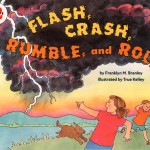
Readers & Thinkers: The 2011 Nobel Prize in Economics. Assume Nothing
Posted by ludw1086 on Sep 7, 2012 in Readers & Thinkers | Comments Off on Readers & Thinkers: The 2011 Nobel Prize in Economics. Assume NothingDear All:
Well, who won?
The Nobel prize for economic sciences for 2011 was announced today, October 10, 2011. It went to two people: Thomas Sargent and Christopher Sims.
Sargent is 68 years old, born in Pasadena, CA and a Professor at NYU and the Hoover Institute. Most of his important work was done at the University of Minnesota. He obtained his BA from UC Berkeley and his Ph.D. in economics from Harvard University.
Sims is 68 years old, born in Washington D.C. and a Professor at Princeton University.
Most of his important work was done at the University of Minnesota. He obtained his BA in mathematics from Harvard and his Ph.D. in economics from Harvard University.
The prize was awarded in part for econometrics, which I thought would happen, but the awardees were a surprise.
So what did these guys do that makes them so Noble?
The Nobel committee wrote that the pair received the prize “for their empirical research on cause and effect in the macroeconomy”.
One of the difficulties about being a serious economist is that the real world is very complex and depends on the actions of these funny creatures called human beings. As a policy maker, it is even more difficult, because you need to answer questions like, “How do we reduce unemployment?” or “What happens if we lower or raise taxes?” or “How much should interest rates be lowered to stimulate business activity?”
The reason that such questions are so hard to answer is that the economic reaction of any policy depends on the humans that interact within the economic system. Their behavior can change over time due to personal changes, due to system changes, or for many other reasons. Thus, as economists, we try to use history to give us a better understanding of the way the economy responds to certain policy.
We take a bunch of data and ask questions, such as, how will unemployment react to a government stimulus plan? In the 1970s, economists were using models that forced them to make many assumptions about the underlying relationships between variables independent of other variables in the system. At the time, this model was also being used by the Federal Reserve and the U.S. government. It was called the FRB-MIT model. There was criticism that this model was not accurate because it built an extremely complex set of equations to model the U.S. economy that would be subject to error, it made assumptions about which variables caused which other variables, and it ignored the dynamic nature of the humans that acted in the system. Thus, the model’s predictions would be unreliable.
Sims proposed a less complicated, statistical method to estimate how macroeconomic variables interacted with each other and how policy might affect the economy. It was the VAR (vector autoregression model). The model is not perfect, but it’s simpler and doesn’t require the user to specify causality or how one item in economy affects the other – although the user can go a step further and do so. VAR models have exploded in the last 30 years. They are used by many macroeconomists to understand policy and the economy.
A particular example might illustrate the importance of this model. The White House economic team on January 10, 2009 produced a report saying that with the fiscal stimulus, unemployment would drop to 7% (it was 8.5% at the time) by the end of 2010. Instead, it rose to 9.7% and is currently 8.8%. One of the reasons that the White House got it so wrong is that they assumed that the economy would respond quite strongly to government stimulus. That is, in economics lingo, they assumed that the multiplier was greater than 1. Part of the reason they thought this is that they used the FRB/US model, which is one of those models in the tradition of the FRB-MIT model.
A former student of both Thomas Sargent and Christopher Sims and a researcher at the Federal Reserve of Minneapolis in the early 1980s, Robert Litterman, said, “You couldn’t believe those FRB models, you basically had to tell them the answer you wanted out of them.” He also remembers the frustration of using these models and asked Sims for advice. Sims told him to try some of the VAR models. They were not perfect either and he went to Sims again. Sims told him to try to put priors on the parameters and out of this was born the Bayesian VAR.
Many of the economic studies using the VAR methodology have found the multiplier to be less than 1. In some sense, these models give more realistic expectations of what a government stimulus would do.
Sargent spent his time working to understand relationships between macroeconomic variables by modeling the economy and incorporating expectations into the models. Sargent has created a vast library of theoretical work in building and estimating mathematical models of the economy, but it is hard to point to any one specific contribution.
Anyone who took a graduate course in macroeconomics in the last 20 years probably came across Sargent’s textbook Dynamic Macroeconomic Theory and probably left the class overwhelmed by the math. This is not surprising: while an assistant professor at Minnesota, Sargent took many courses in graduate-level mathematics.
In 2007, Sargent gave a graduation speech at his alma mater, UC Berkeley, and gave the students a list of lessons. I found three of them interesting and relevant.
Everyone responds to incentives, including people you want to help. That is why social safety nets don’t always end up working as intended.
When a government spends, its citizens eventually pay, either today or tomorrow, either through explicit taxes or implicit ones like inflation.
It is feasible for one generation to shift costs to subsequent ones. That is what national government debts and the U.S. social security system do.
So what about the Nobel choice?
There is no doubt that both of these men had a strong influence on the economics profession, although it’s easier to point to the direct application of Sims’ contribution. I thought Hausman and others would be the first in line for any prize given in econometrics, but both Sargent and Sims are well known in the economics profession. Also, the Nobel committee’s sensitivity to the current macro troubles all around the world probably played some part in the timing of this prize.
Both of them have advised some notable students in economics, including Lars Hansen. Another joint student of theirs, Robert Litterman, said of the prize, “It’s amazing and well deserved. It’s great to see both of them get it. And it gives appropriate recognition to the University of Minnesota economics department and its long tradition of excellence.”
I have personally benefited from VARs. I used them when I worked in Wall Street to forecast various economic variables. At the time, my firm was using a very bad inflation model and I improved our forecasting ability with a VAR model. More recently, I wrote a paper about an inflation-hedged portfolio that would be useful for investors, and Sims was gracious in helping me understand the properties of the out-of-sample estimation.
So is that it?
Economists have made strides to understand macroeconomics and policy, yet, there is still so much to figure out. We more or less know the short-term effects of certain policies, like tax cuts and government spending and Fed’s actions on interest rates. However, we are less sure of the long-term effects and more work needs to be done in this area. I believe that too few economists focus on the really important issues of macroeconomics, partly because they are very difficult and partly because they aren’t always “in fashion”.
For more information on the winners:
http://www.nobelprize.org/nobel_prizes/economics/laureates/2011/
Finally, congratulations to these winners and their pursuit of knowledge.
Enjoy!
Ludwig






